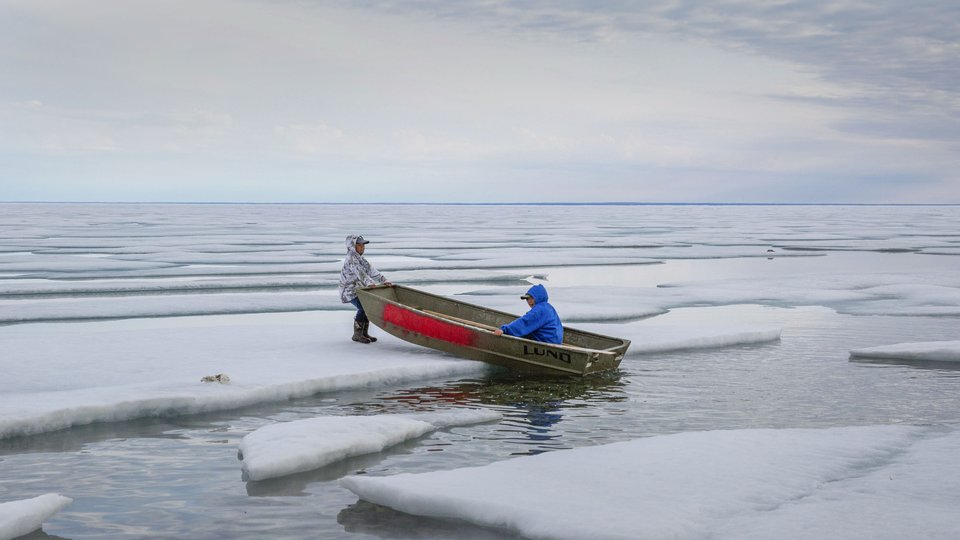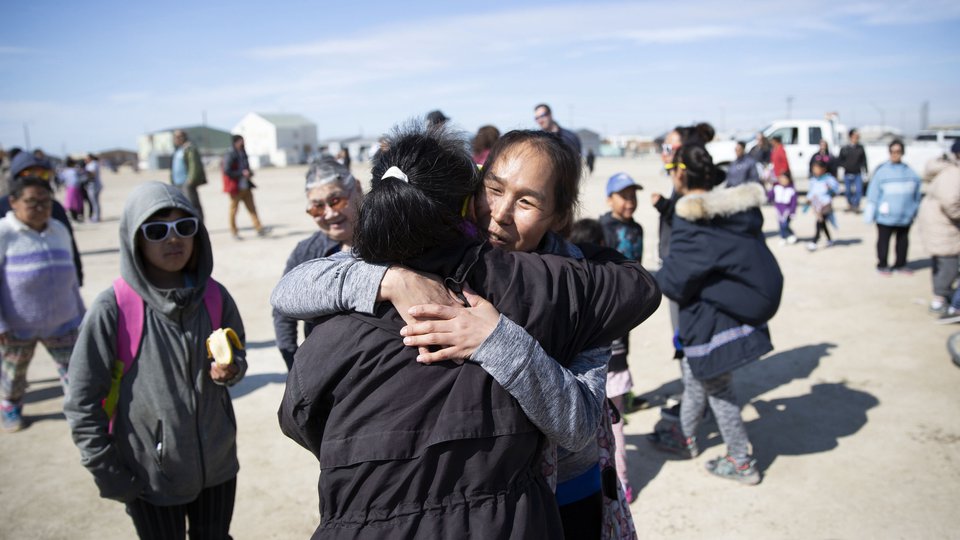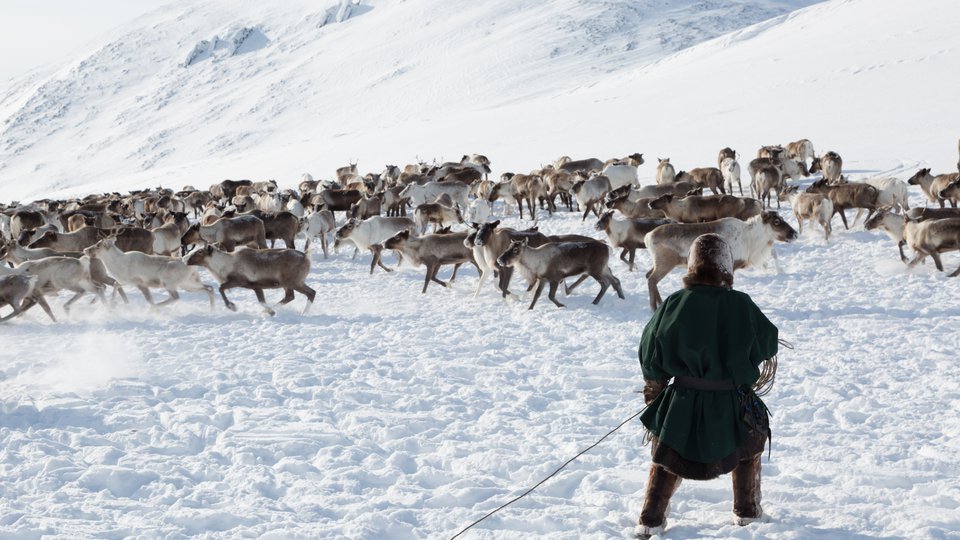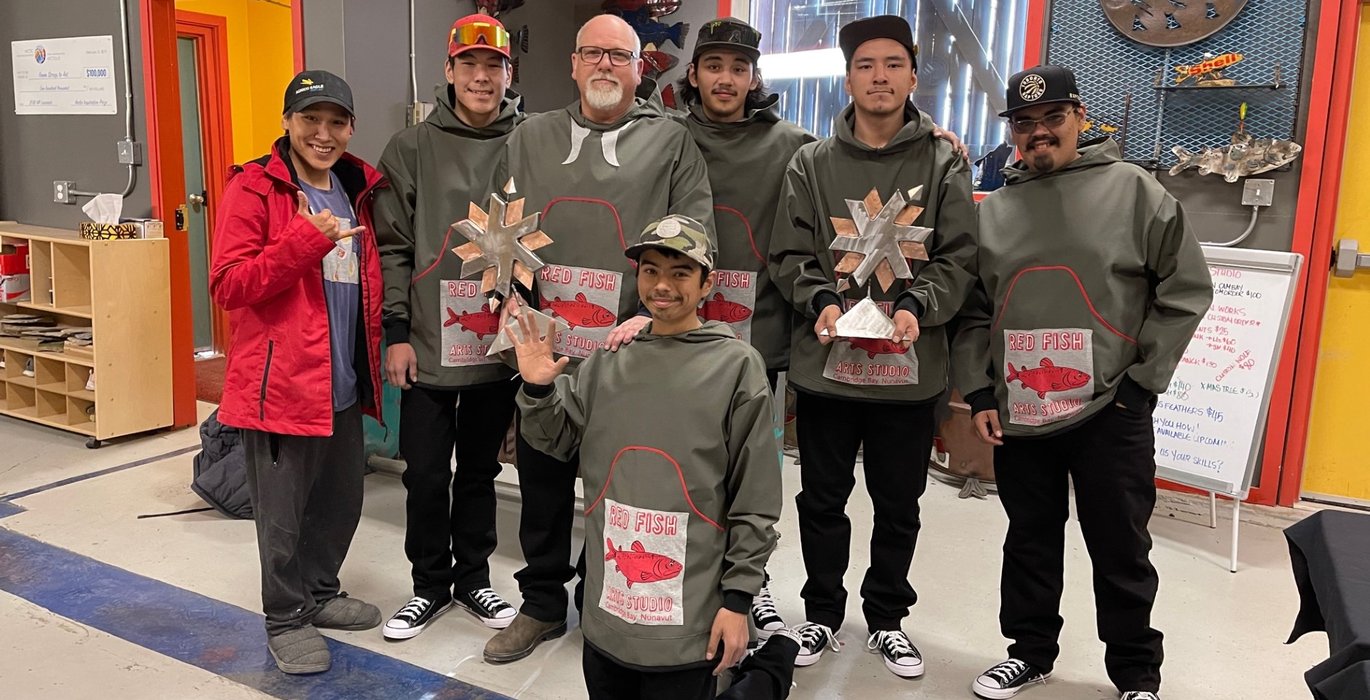
A new program in Cambridge Bay is challenging students to find purpose and peace through art and creativity.
Red Fish Studios started five years ago with the help of local residents and the RCMP. They were looking for ways to keep young people out of trouble. They also wanted youth in the hamlet to develop life skills, a passion for work and to learn about honesty and accountability.
In the heart of this beautiful community, the studio is part industrial, part gallery and all clubhouse. The walls are full of tools, paintings and inspiration. The floors are full of welding machines, metal sculptures and displays. The smell of coffee fills the air.
Mark Slatter was hired a few years ago to help finish a welding project. He was looking for a new work challenge to give him purpose and direction. He had yet to learn how much he would enjoy teaching and building relationships in Cambridge Bay.
“I identify with these kids in every way and I’m committed to helping them with all aspects of life.”
Overlooking the bay, near the old Hudson Bay trading posts, this once unused space is now thriving with ideas and creativity. It’s become the new town square where locals gather to discuss ideas and talk about the future.
The studio started as a small artist space, where locals could teach and pass on skills to the next generation. Painting, photography, and music soon developed into metal art with small projects and commissions getting a handful of students interested in expressing themselves.
What started as an at-risk youth program has turned into an apprenticeship of sorts. All of the students who’ve come through the program are employed in different industries in Nunavut. Some have returned to school to upgrade their skills while others use what they learned to help the next generation.
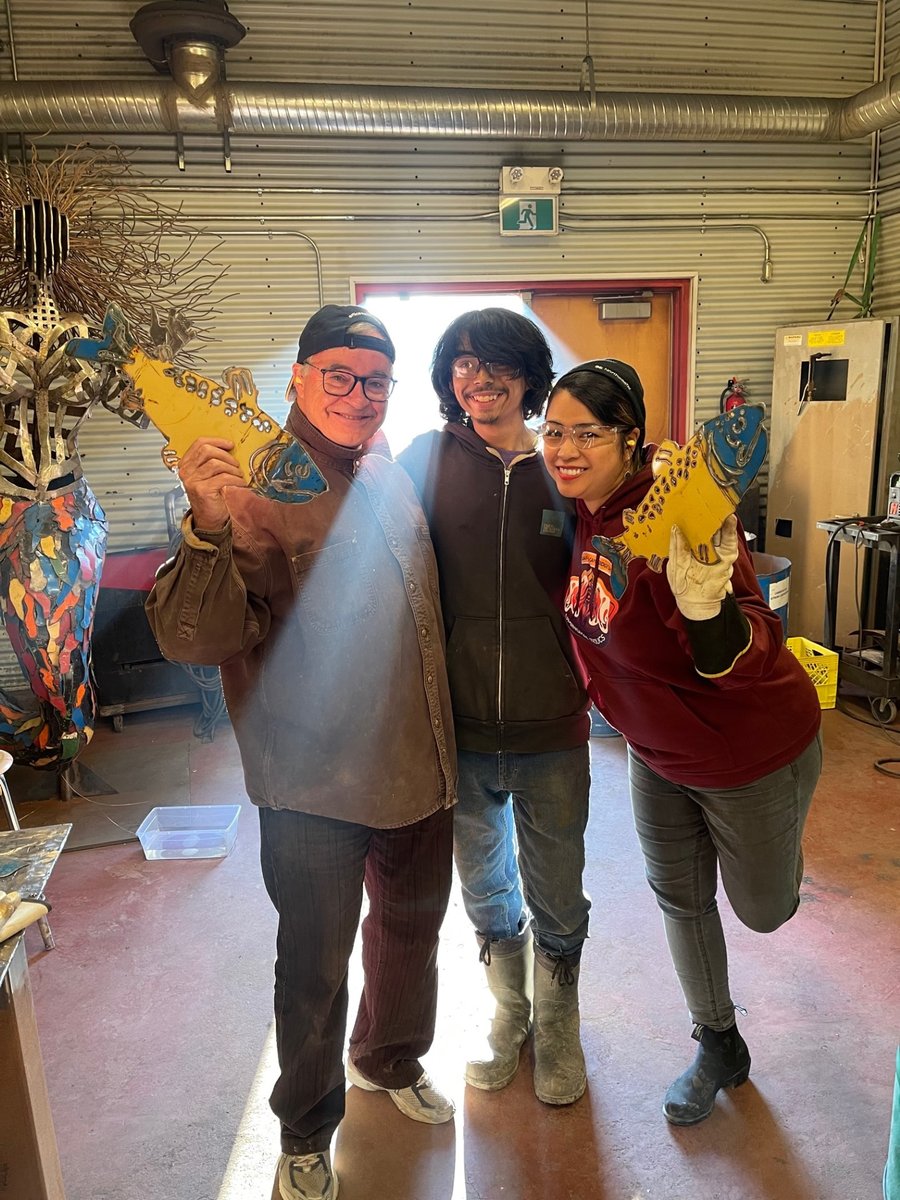
Red Fish Studios started five years ago with the help of local residents and the RCMP. (Photo submitted by Mark Slatter)
The former fish plant is now home to a thriving metal workshop. Slatter and his group have made signs for the RCMP detachment, had their work featured on Canadian Navy ships and they’ve even made metal statues for NATO. Red FIsh even got a little visit from Prime Minister Trudeau.
“The kids played it pretty cool, until he walked in the door.”
The PM’s visit created a lot of interest in the program and the community. More people joined and they began getting more and more commissions. This had a positive effect on the hamlet and its residents. Now people wear the Red Fish Studios t-shirts with pride.
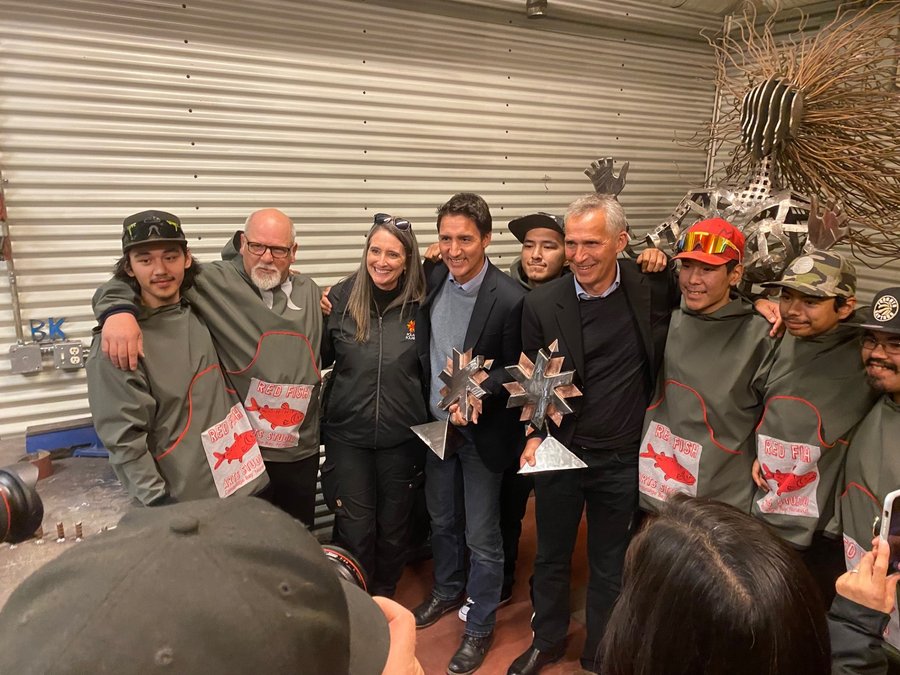
Prime Minister, Justin Trudeau visited the art studio in August 2022. (Photo submitted by Mark Slatter)
Slatter insists the program is much more than helping a few students get their lives back on track. He said its created a model for how to get young people engaged, motivated and involved. A model he would like to see spread out across the North and beyond.
“I’m hoping to work myself out of a job,” Slatter said. “I’m hoping these guys will continue this beyond Cambridge Bay.”
Daryl Taptooma-Haynes is now 23 and has been involved in the program since the beginning. He has seen the enthusiasm and support grow among other young people.
“Guys I know were getting into a lot of trouble. We were abusing alcohol and drugs, we weren’t going in a positive direction.”
Taptooma-Haynes has become an impressive artisan and is now Slatter’s apprentice and right hand. A former student of the program, he’s now helping the next group find structure, discipline and enjoyment in the work they’re doing.
“I want to bring this knowledge to others like me and my brother, all across Nunavut.”
Slatter also notes the positive impact the program has had on relationships with the RCMP in the community. When he arrived, young men had a negative view of the RCMP. They only interacted with them when things were negative and he saw the effect it had on the hamlet’s mentality. Today, the students see the police as friends and mentors, there to help and give guidance.
“The police went from slapping bracelets on these young people to becoming friends and peers.”
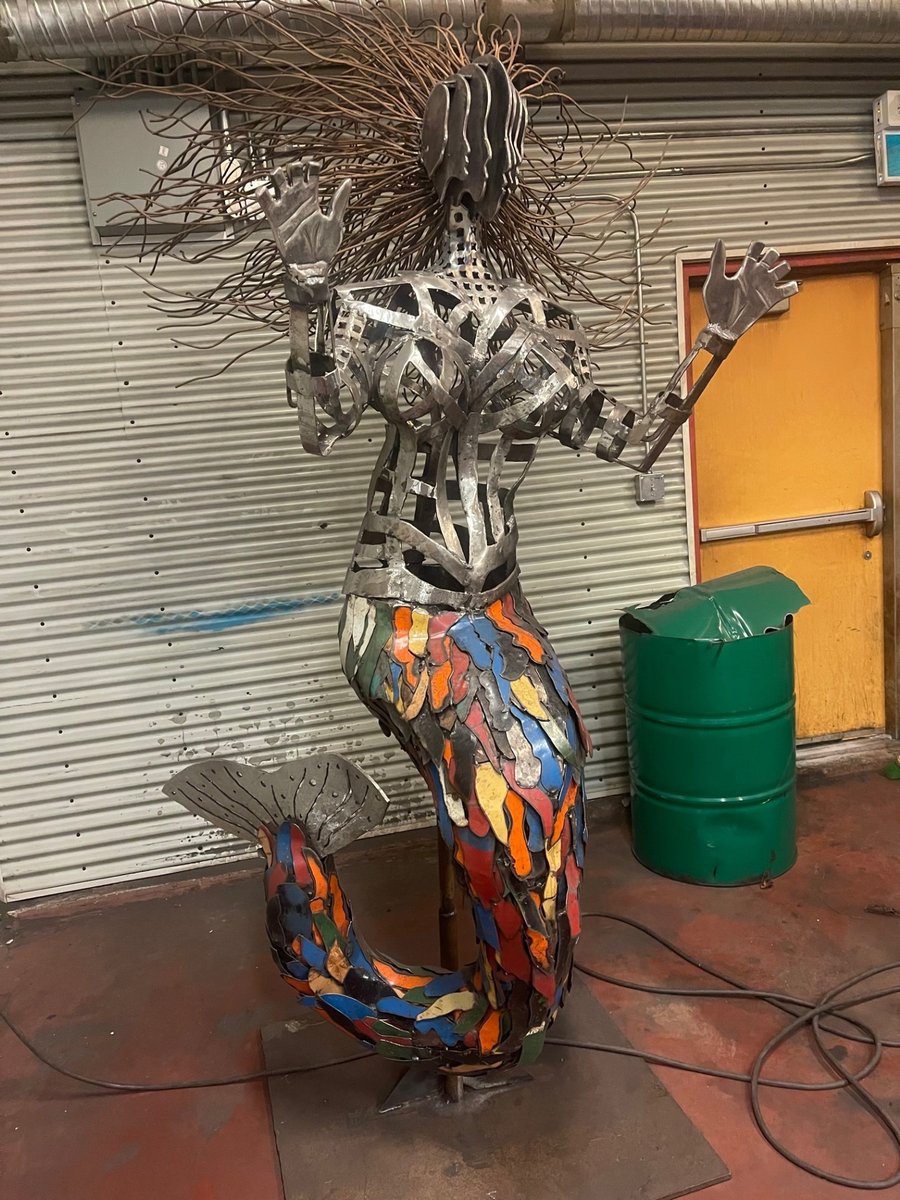
Red Fish Studio uses reclaimed metal from the scrapyard to create most of its projects. (Photo submitted by Mark Slatter)
Slatter thinks this was a huge hurdle for everyone. Students, volunteers, locals and RCMP are now excited about coming to the studio to work. The environment went from a space of necessity to a place of community. Slatter sees it in the way people walk with more confidence, proud of what they’ve accomplished. He sees it in their expectations for themselves, being on time, putting in the effort and becoming role models.
“It’s all about trust,” Slatter said. “And this trust is most important when someone in the program falls short or makes a mistake in the community.”
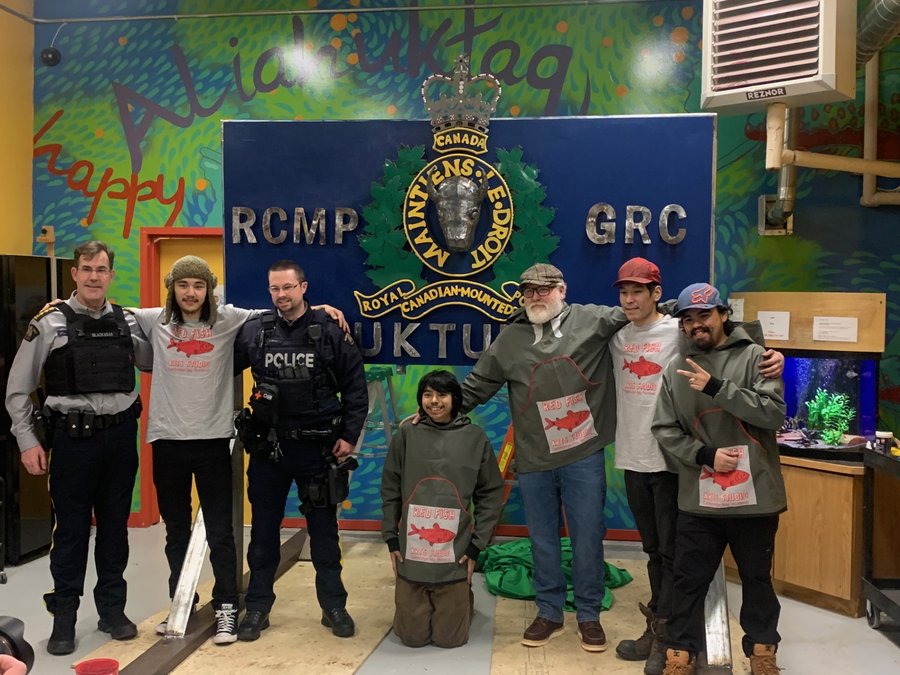
(Photo submitted by Mark Slatter)
Red Fish can also boast it’s mostly self-sufficient. It uses reclaimed metal from the scrapyard to create most of its projects. They recycle old steel barrels and appliances, anything they can use to make a cool shape or to add more colour. This stewardship of the land helps teach everyone about the power of waste and reusing. Slatter always wants them to see the big picture.
“I try to get them involved in the whole process, from beginning to end,” he said. “I want to expose these kids to everything possible.”
And it’s working. All of the students who’ve come through the program in the last six years are employed. Students leave, find work and start a life. They all come back anxious to hear about new projects and ideas. It’s a time to catch up, laugh and talk with new faces and old friends. They share stories and experiences about travel and work inside and outside of Nunavut.
This is true of most alumni of the program. People check in from all over the country to see what’s happening in the little old building down near the bay. Everyone is excited to hear about successes and give their opinion about how to overcome challenges and continue to make the program better.
As for Slatter and Taptooma-Haynes, they’re happy to see others rooting for their success. The more people get behind programs like this, the more chances these programs will grow. Taptooma-Haynes thinks Red Fish Studio has brought people together.
“You see it every day, it has completely come full circle,” Taptooma-Haynes said.
He sees it in the faces of those who come every day for more than just the work. They come to a clubhouse for the social aspect as much as anything else. People helping people, giving back and lifting each other up. This is what they hope the legacy will be.
“My hope is,” Slatter said, “these guys can continue the program here in Cambridge and start new programs for others in communities all over the North, Canada and the world.”
